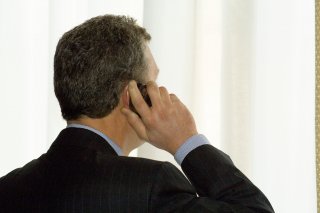Non-Ionizing Radiation From Wireless Technology
- Wireless technology emits radiation in the radiofrequency region of the electromagnetic spectrum a type of non-ionizing radiation.
- Government agencies set safety guidelines that limit your exposure to radiofrequency energy.
- Scientists continue to study the long-term health effects from exposure to low-levels of radiofrequency energy.
Radiofrequency (RF) energy is a type of electromagnetic radiation. It is used to transmit signals carrying information in the form of radio waves. Radio waves are broadcast using a transmitter. When the radio waves reach a receiver, the signal is converted back into the information that was originally sent by the transmitter. When you talk on a cell phone, your cell phone acts as a transmitter and your voice is carried on radio waves to the person you are calling. Their phone acts as the receiver and converts the signal back into your voice. In addition to cell phones, other wireless devices such as radios, Wi-Fi routers, satellites, radars and pacemakers can send or receive RF energy waves.
About Non-Ionizing Radiation From Wireless Technology
Electronic devices that send information through the air are everywhere. Between Wi-Fi, cell phones and other networks, people are in a nearly constant cloud of wireless signals. These devices use RF energy to send and receive information.
RF energy is a type of non-ionizing radiation. Non-ionizing radiation is not strong enough to directly affect the structure of atoms or damage DNA; however, it does cause atoms to vibrate, which can cause them to heat up.
When RF energy is very strong, such as from radar transmitters, it can be dangerous. It can heat parts of your body very rapidly and cause serious injuries, like severe burns. These extremely high RF energy levels are only found near large and powerful equipment, such as commercial long-distance transmitters mounted on communication towers. Radiofrequency energy decreases as it travels in atmosphere, which means that it gets weaker the farther it is from the transmitter. Powerful long-distance transmitters usually do not create high-level RF energy on the ground. If there is a ground level hazard from RF energy, there are safety requirements to prevent the public from dangerous exposure. Transmission towers that produce hazardous levels of RF have warning signs and security in place that limits access to only authorized personnel. These warnings and access restrictions should always be followed to keep you safe.
Overall, studies have not shown an association between cell phone use and radiogenic health effects, such as cancer. Limited evidence from studies of the human body, population studies, and laboratory animals suggest an association between cell phone use and cancer; however, these observations are not conclusive, and several limitations of these studies, including reproducibility issues, prevent us from concluding a causal effect. Scientists continue to study the effects of long-term exposure to low-levels of RF energy.
Cell phone towers may broadcast higher levels of RF, so always remember to follow any warnings that limit access to the tower itself or the surrounding area.
What You Can Do
Scientists continue to study the effects of long-term exposure to low-levels of RF energy. If you are concerned, you can take these simple steps to reduce your exposure to RF energy:
- Limit use. Reduce the number and length of your calls, or time spent using a wireless device.
- Text instead. Texting uses a much smaller signal than a voice call, resulting in less exposure to RF energy.
- Ensure good reception. If you have poor reception, some phones will boost their signal to try to make a better connection. If you are able, try to make calls in a location with good reception. This can reduce your RF exposure by avoiding signal boosts.
- Increase distance. Add space between your wireless device and your body. For example, when possible make use of hands-free technology.

